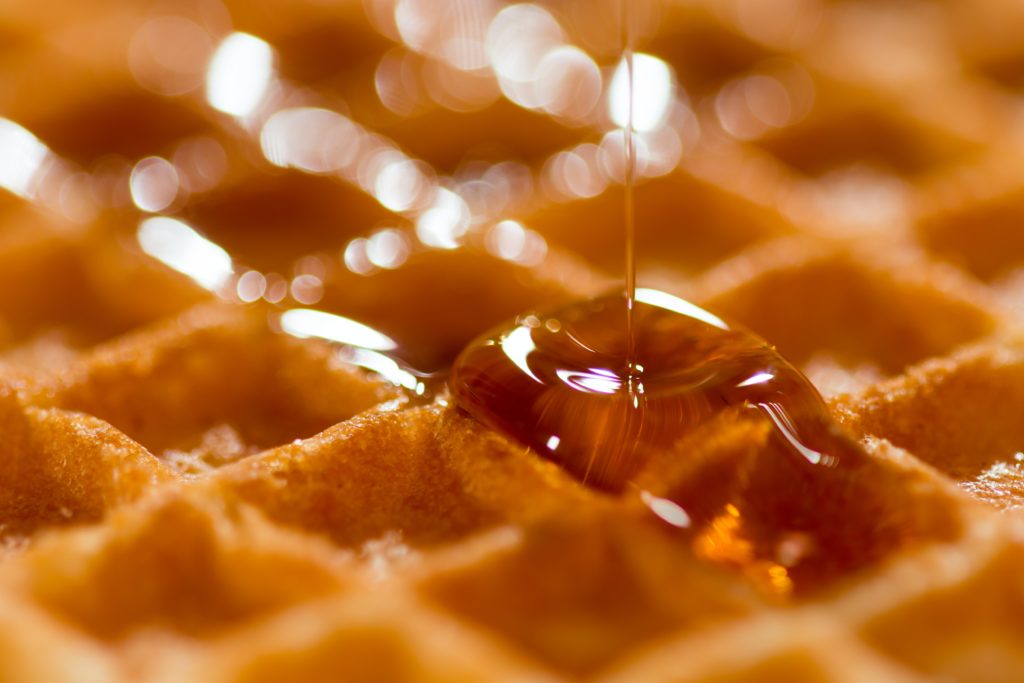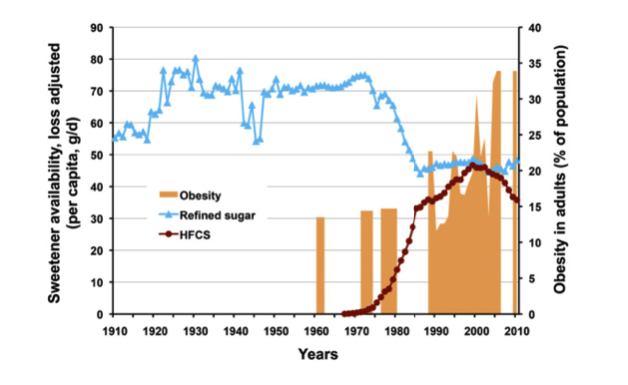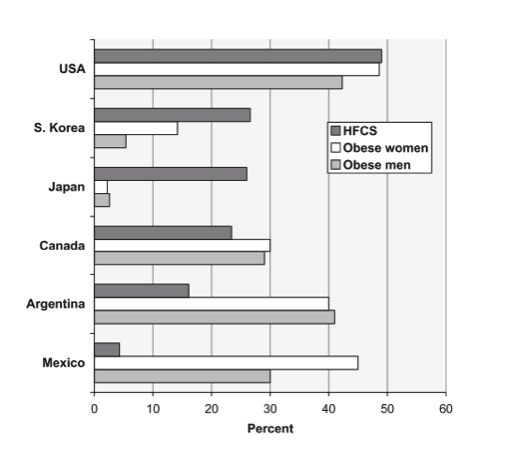Is HFCS (high fructose corn syrup ) different than sucrose? Since its invention high fructose corn syrup has been a very controversial sweetener. Today many argue that HFCS is much worse than table sugar.

Same as the most popular disaccharide sucrose (table sugar), high fructose corn syrup consists of the same two monosaccharides – glucose and fructose. The difference is that these two monosaccharides in HFCS are not bonded together as they are in sucrose. This lack of one bond gives HFCS liquid form instead of crystals of sucrose. The liquid form of this sugar is very beneficial to food industry as it’s easier to transport and handling. Before adding to products it doesn’t have to go through the dissolving process. It helps in browning in baking process. It adds moisture to food. And it does never recrystallize after baking. What’s more important its composition can be adjusted by the content of two monosaccharides and used according to its different characteristics such as sweetness or stability.
The very important aspect is that HFCS is produced from corn which is subsidized in some countries and therefore, the price of HFCS is lower than the price of sugar produced from cane.
Apart from the physical or chemical characteristic we are more interested in the difference between HFCS and sugar on human digestion and health.
When we eat sucrose, the first stage of digestion happens in our mouth. The disaccharide molecule is broken into two monosaccharides – glucose and fructose. In case of HFCS there is no bond between two monosaccharides so basically HFCS has the form of sucrose after the first stage of digestion takes place. From the chemical point of view there is no difference whatsoever between these two sweeteners.
From medical point of view, more and more experts agree that HFCS and sucrose are metabolically equivalent since HFCS is metabolized through the same pathways as sucrose. There are no significant blood glucose, insulin, leptin, and ghrelin response differences between the two sweeteners.
Secondly, the unique relationship between HFCS and obesity was never found which is shown in the two plots below.


It is important to remember that all the above findings refer to HFCS55 where the amount of fructose is similar to the amount of glucose. Only this type of HFCS is chemically similar to sucrose and does not differ metabolically or in metabolical processes wydaje mi sie jednak, ze to pierwsze lepiej brzmi. Other types of HFCS where the amount of fructose is much higher (they are most often used in beverages) may pose risk when consumed in larger amounts as high consumption of fructose may be associated with epidemics of obesity and metabolic syndrome istnieje taki syndrome naprawde.
Finally, HFCS is produced from genetically modified corn which is not permitted for consumption in European Union.
Source:
Melanson, K.J. et al., 2008. High-fructose corn syrup, energy intake, and appetite regulation. American Journal of Clinical Nutrition, 88(6), pp.1738–1744.
Rippe, J.M. & Angelopoulos, T.J., 2013. Sucrose , High-Fructose Corn Syrup , and Fructose , Their Metabolism and Potential Health Effects : What Do We Really Know ? 1 , 2. , pp.236–245.
White, J.S., 2008. Straight talk about high-fructose corn syrup: What it is and what it ain’t. American Journal of Clinical Nutrition, 88(6), pp.1716–1721.
White, J.S., 2013. Challenging the fructose hypothesis: new perspectives on fructose consumption and metabolism. Advances in nutrition (Bethesda, Md.), 4(2), pp.246–56.